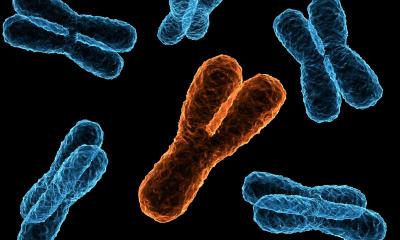
Image source: Adobe Stock/Robert Kneschke
News • Sex and gender bias
Beyond "bikini medicine": Should we redefine women's health?
A new study has found that women’s health research remains disproportionately focused on the reproductive years – particularly on pregnancy – with few articles on the major causes of illness and death in women.
The study was published in the Journal of Women's Health.
Despite growing awareness of differences in how women experience medical conditions and the impact this can have on diagnosis and treatment, this research gap has widened over the last ten years, researchers found. Lead author Laura Hallam from The George Institute for Global Health said that the focus on so-called ‘bikini medicine’ stemmed from the mistaken belief that women’s health only differs from men’s in the parts of the body that a bikini would cover. “Historically, women’s health research has focused on reproductive health. However, noncommunicable diseases are now the leading cause of death and disability for women in most countries, particularly low- and middle-income countries,” she said. “Sex and gender bias in research and health care can lead to poorer health outcomes for women, particularly in conditions not recognised as women’s health issues.”
Overall, we found that many diseases that are actually contributing to considerable ill health and deaths in women, such as cardiovascular disease, stroke, and chronic lung diseases, were poorly covered in women’s health publications
Laura Hallam
George Institute researchers analysed the main health content of articles published in six women’s health journals and five leading general medical journals in 2010 and 2020, categorising the main medical area topics and the life stage under study. They then compared these findings with the leading causes of disease in women according to the well-established Global Burden of Disease study. They found that, in 2010, just over one third (36 percent) of the women’s health content in both sets of journals was focused on reproductive health, and by 2020 this had increased to just under half (49 and 47 percent for each journal type respectively). The reverse was true for non-communicable diseases (NCDs) with NCD content decreasing over this time frame in both types of journals.
Over both years combined, cancer was by far the most covered NCD topic in women’s health journals at just over 40 percent, followed by mental illness and substance abuse at 22 percent. Cardiovascular disease made up just over 15 percent of NCD articles. In general medical journals, just over half (51.5 percent) of NCD topics in women’s health were on cancer, followed by disorders of nerves and the nervous system (9.7 percent), with cardiovascular disease at the lower end of the scale along with mental illness, substance abuse, and muscle and bone health (all 7.5 percent).

Image source: Adobe Stock/adragan
“Overall, we found that many diseases that are actually contributing to considerable ill health and deaths in women, such as cardiovascular disease, stroke, and chronic lung diseases, were poorly covered in women’s health publications,” said Ms Hallam. “Also, when we categorised the articles according to a woman’s life stage, we found that most were on pregnancy or the reproductive years, with very few articles on menopause,” she added. “While women’s life expectancies are generally longer than men’s, women have fewer healthier years and high rates of disability in older age, so it’s important to look at health and well-being across the life span and study diseases that are more common in old age, that might impact women more.”
The researchers found very few articles focused on a sex and/or gender-based analysis, reinforcing the need for it to be incorporated more routinely in health and medical research to gain a better understanding of how men and women experience disease differently. “Our study shows there is much work to be done by journals, funders, and researchers to broaden understanding of women’s health, so that women of all ages are appropriately and effectively served by scientific research and the health benefits that result from it,” said Ms Hallam.
Source: George Institute for Global Health
31.03.2022











